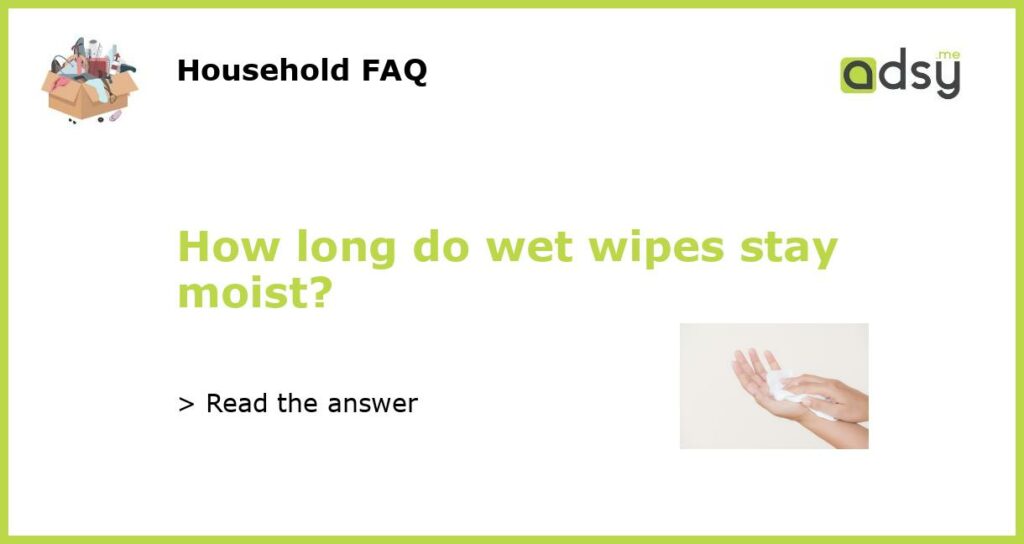Wet wipes are a convenient and versatile product that many people rely on for various purposes, from cleaning surfaces to personal hygiene. One of the most important aspects of wet wipes is their moisture, as this determines their effectiveness and usability. But how long do wet wipes stay moist? Let’s explore the factors that influence the moisture retention of wet wipes and how to ensure they stay fresh and usable for as long as possible.
1. The Packaging and Seal: A Crucial Factor in Moisture Retention
The packaging and seal of wet wipes play a vital role in maintaining their moisture levels. Wet wipes typically come in resealable packs or containers, designed to keep them moist until they are ready for use. The seal on these packs or containers helps prevent air and moisture from entering, ensuring the wet wipes remain fresh and moist for an extended period.
2. Quality and Thickness of the Material
The quality and thickness of the material used to make wet wipes are essential factors that determine their moisture retention capabilities. High-quality wet wipes are typically made from non-woven fabrics that have good moisture retention properties. Thicker wipes are often more effective at retaining moisture compared to thinner ones.
3. Ingredients and Preservatives
The ingredients and preservatives added to wet wipes also play a role in their moisture retention. Some wet wipes contain alcohol or other substances that can evaporate quickly, leading to moisture loss. On the other hand, certain ingredients, such as glycerin or aloe vera, can help retain moisture and keep the wipes from drying out. Preservatives are added to wet wipes to prevent bacterial growth, but they can also impact moisture retention. It is important to choose wet wipes with preservatives that strike a balance between preventing bacterial growth and maintaining moisture levels.
4. Environmental Factors: Temperature and Humidity
The environment in which wet wipes are stored can significantly affect their moisture retention. Higher temperatures and low humidity can cause wet wipes to dry out more quickly. It is recommended to store wet wipes in a cool and dry place, away from direct sunlight and extreme temperature fluctuations. This will help preserve their moisture and ensure they remain fresh and usable for a longer period.
5. Shelf Life and Expiration Date
Wet wipes typically have a shelf life and an expiration date, which indicates how long they can retain their moisture and effectiveness. The shelf life is the period during which the product is expected to remain stable and maintain its quality if stored correctly. The expiration date, on the other hand, indicates the date after which the product may no longer be safe or effective to use. It is essential to check the expiration date before using wet wipes and avoid using them after this date to ensure optimal moisture retention.
In conclusion, the moisture retention of wet wipes is influenced by several factors, including the packaging and seal, quality of the material, ingredients and preservatives, environmental factors, and the product’s shelf life. To ensure wet wipes stay moist for as long as possible, it is crucial to choose high-quality wipes with a reliable packaging and seal, store them in a cool and dry place, and use them before their expiration date. By following these guidelines, you can maximize the moisture retention of wet wipes and enjoy their convenience and effectiveness whenever you need them.






